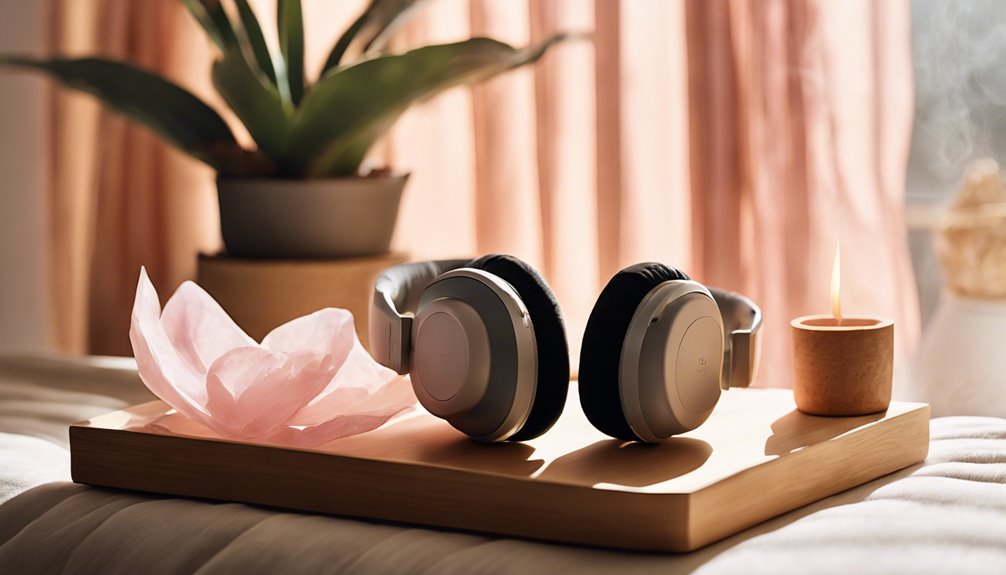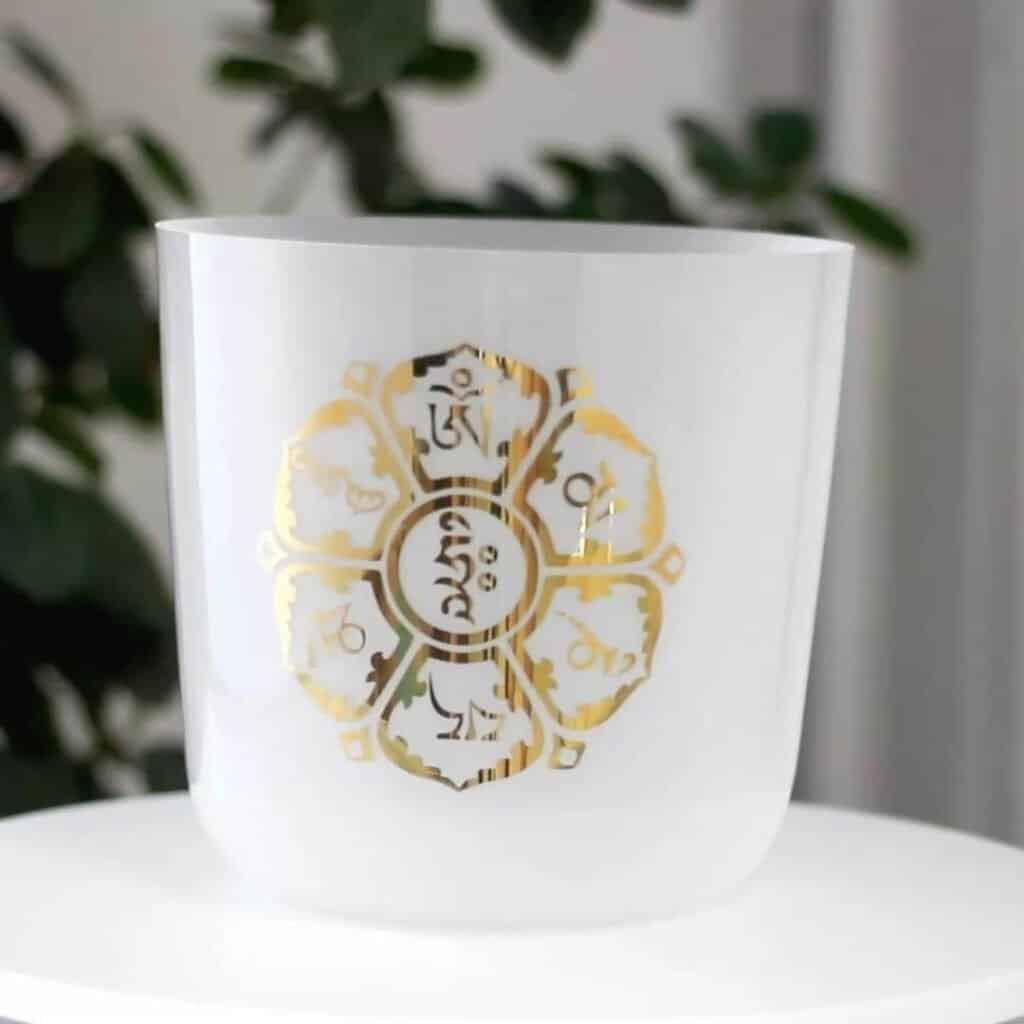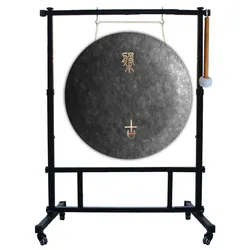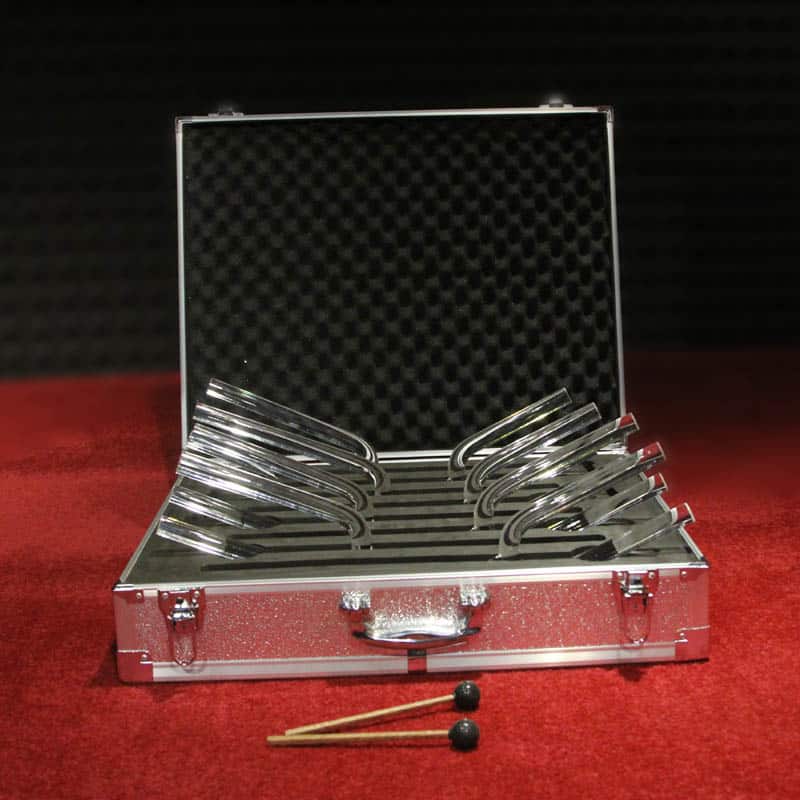When your inner harmony needs a gentle boost, creating a meditation music playlist can be your gateway to tranquility. You'll discover that the right combination of sounds can transform your practice from merely sitting in silence to experiencing profound states of consciousness. Whether you're drawn to the ethereal tones of crystal bowls, the primal rhythms of tribal drums, or the soothing whispers of ocean waves, your perfect playlist awaits your careful curation. The secret lies in understanding how different elements of sacred sound work together to elevate your meditation journey.
Key Takeaways
�?Start with calming nature sounds or gentle ambient tracks for 8-10 minutes to ease into meditation gradually.
�?Select high-quality audio files and ensure consistent volume levels throughout the playlist to prevent disruption.
�?Include crystal singing bowls or Tibetan bells for their healing frequencies and spiritual connection during meditation.
�?Create different playlist lengths (15, 30, 45 minutes) to accommodate various meditation schedules and practices.
�?Use 8-12 second crossfading between tracks and avoid sudden volume changes to maintain a seamless meditative state.
Understanding Different Meditation Music Styles

With calming frequencies and intentional compositions, meditation music spans several distinct styles that serve different purposes in mindfulness practice. You'll discover that each style creates a unique atmosphere, helping you achieve different states of consciousness and relaxation during your sessions.
Nature-based meditation music incorporates serene melodies with organic sounds like rainfall, ocean waves, or forest ambiance, allowing you to connect deeply with the natural world. If you're seeking a more structured approach, you'll find that rhythmic beats combined with ambient harmonies can guide your breathing and help maintain focus during longer sessions. Crystal singing bowls and Tibetan bells produce calming frequencies that resonate with your body's energy centers, making them perfect for chakra meditation and deep healing work.
Modern meditation music often blends electronic elements with traditional instruments, creating layered soundscapes that support both guided and silent practices. You'll notice that some compositions feature minimal instrumentation to avoid mental distraction, while others build complex harmonic structures that can facilitate deeper states of meditation. Understanding these distinct styles will help you choose the most effective sound environment for your practice.
Choose Your Sacred Sound Elements
According to ancient wisdom, sacred sound elements serve as powerful tools for deepening your meditation practice. When you're crafting your meditation playlist, you'll want to carefully select sounds that resonate with your spiritual intentions and create the perfect atmosphere for inner exploration. Sacred instruments and specific sound frequencies can help you achieve deeper states of consciousness and emotional balance.
Here's how you can incorporate sacred sound elements into your practice:
- Start with pure tones like crystal singing bowls or Tibetan bells, which produce healing frequencies that align with your chakras and energy centers
- Layer in natural sounds such as flowing water, gentle rain, or soft wind chimes to ground your experience and connect with earth's rhythms
- Add traditional sacred instruments like the Native American flute, Indian sitar, or ceremonial drums to invoke ancestral wisdom and spiritual depth
- Include specific sound frequencies, such as 432 Hz or 528 Hz, which many believe hold special vibrational properties that promote harmony and healing within the body
Building Your Playlist Structure

Now that you've selected your sacred sound elements, a well-structured playlist will help you maintain focus throughout your meditation journey. Start by arranging your tracks to create playlist harmony, ensuring each piece flows naturally into the next without disrupting your concentration.
Begin with longer, ambient tracks that help you settle into a meditative state, typically lasting 8-10 minutes each. You'll want to structure the middle section with your core meditation sounds, which might include singing bowls, nature sounds, or gentle instrumental pieces. These selections should maintain a consistent energy level while providing subtle mood shifts that deepen your practice.
As you approach the end of your session, incorporate tracks that gradually shift your awareness back to the present moment. Consider creating multiple playlists for different meditation lengths – perhaps 15, 30, and 45-minute options. You can also design specialized sequences for morning energizing sessions or evening wind-downs. Remember to test your playlist structure during actual meditation sessions and adjust the arrangement until it supports your practice seamlessly.
Essential Technical Considerations
Several technical aspects require attention when creating your meditation playlist to guarantee an uninterrupted practice. You'll need to reflect on both the technical quality of your audio files and how they shift from one track to another, ensuring a seamless flow that won't disrupt your meditation session.
- Always opt for high audio quality files (320kbps MP3 or lossless formats) to avoid compression artifacts that could become distracting during quiet moments
- Check the tone dynamics of each track, making sure there aren't any sudden volume spikes or dramatic shifts that might startle you
- Use crossfading between tracks (usually 8-12 seconds works well) to create smooth transitions and maintain the meditative state
- Export your playlist at a consistent volume level across all tracks to prevent the need for manual adjustments during practice
Remember to test your playlist before your actual meditation session, paying close attention to how the tracks flow together and whether the overall sound quality meets your needs. You might need to make adjustments to achieve the perfect balance for your practice.
Optimize Your Listening Experience

Creating the perfect technical setup leads naturally to optimizing how you'll listen to your meditation music. You'll want to establish a mindful ambiance that supports your practice while maximizing the emotional resonance of each carefully selected track. Choose a quiet space where you won't be disturbed, and consider using high-quality headphones that can deliver both crystal-clear highs and deep, resonant bass frequencies.
Position yourself comfortably, whether you're sitting on a cushion or lying on a yoga mat, and adjust your volume to a level that allows the music to envelop you without overwhelming your senses. You'll find that different times of day might require subtle adjustments to your listening setup – early morning sessions often benefit from slightly lower volumes that complement the natural quiet. Take time to experiment with speaker placement if you're not using headphones, as the way sound travels through your meditation space can greatly impact your experience. Remember to eliminate potential distractions by turning off notifications and ensuring your playing device won't interrupt your session with unexpected sounds or automatic updates.
Conclusion
You're now equipped to create your perfect meditation playlist, though let's be honest – you'll probably spend more time organizing it than actually meditating. Still, when you've finally arranged those crystal bowl recordings and whale songs just right, you'll be ready for transcendence, or at least a really good nap. Remember, whether you're floating in sonic bliss or just trying to drown out your neighbor's lawn mower, your carefully curated playlist will serve you well.






